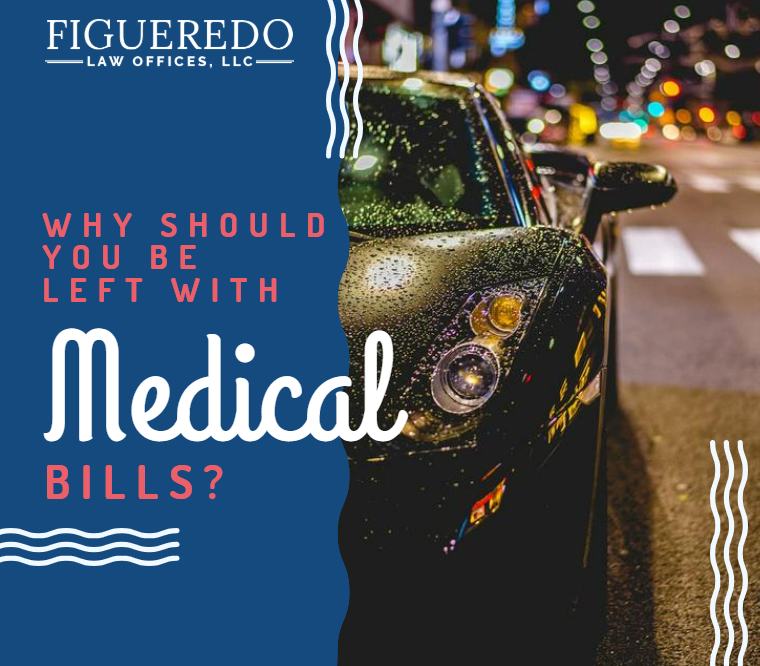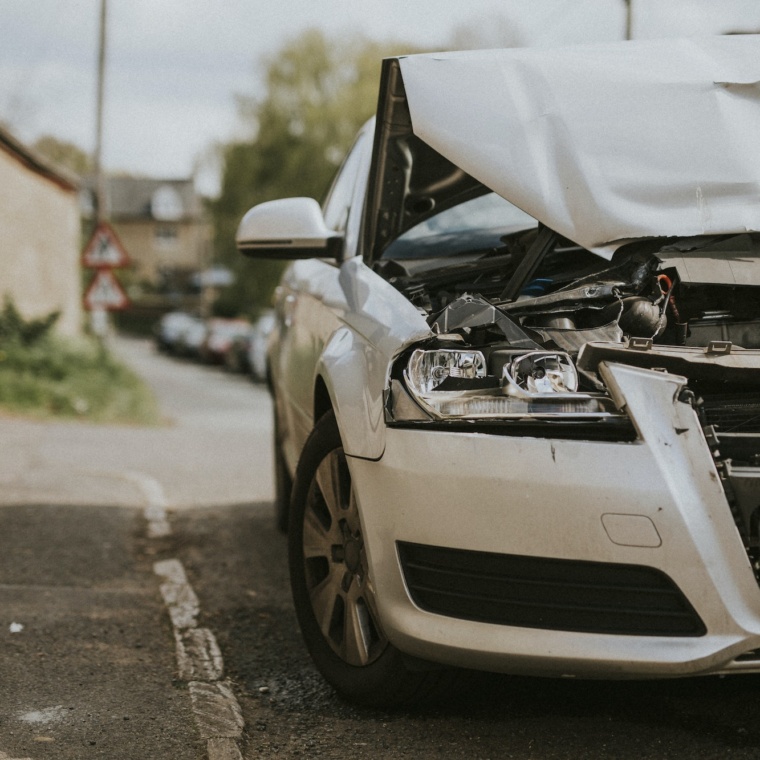Let’s face it, getting in a traffic accident is a horrible experience, whether it is your fault or not. There’s a flood of emotions, often a bit of chaos, and usually some confusion about what just happened.
Being prepared can make the process a whole lot easier. Just keeping a pen, some paper, or a blank accident report, and a flashlight in your glove compartment is a great help when it comes to collecting information.
It’s critical that you calm down and take a step-by-step approach to the aftermath of the collision. What you do in the next seconds, minutes, and hours is crucial to protecting your health and pocketbook. Plus it ensures that you are doing all of the tasks that you are legally required to do.
Check Yourself and Passengers for Injuries
In the moments following a collision, thoroughly check yourself and your passengers for injuries. If you or any of them have neck or back pain, you need to stop the injured person from moving and wait for first responders to arrive. Paramedics know the proper ways to safely move patients with those injuries, without creating additional trauma.
Check Your Immediate Surroundings
Take a deep breath and assess what is going on around you. Are you safe? Do you smell smoke? Is there anything that you have to do immediately to keep yourself safe?
In case of an accident, the first priority is safety. Everything else is secondary.
Move Your Car to a Safe Place and Stop
If the accident was minor and you are not injured, it is best to move your vehicle to a safe spot out of the traffic flow. If there are severe injuries to anyone involved, however, you should leave your car in place for the accident investigation.
When you move your vehicle, do it slowly so that you don’t cause more damage or injuries. Calm down and remember to turn your hazard lights on, put the car in park with the parking brake on, and turn the vehicle off. If you have a chance, look at any other cars involved in the accident and jot down their license plate numbers – just in case they decide to drive away from the scene.
Whatever you do, you should not leave the scene of the accident. If you have to go because you are being threatened or it is otherwise unsafe for you to be there, you should be on the phone to 911, explaining why you left and where you are going. Returning to the scene once first responders have arrived is your best strategy in this case. Doing anything else risks a citation or arrest for hit-and-run.
Check the Occupants of Other Vehicles for Injuries
Next, watch for traffic and exit your vehicle. Check the occupants of any other cars and pedestrians who were involved for injuries and call 911 if there are any. Even seemingly minor injuries should be checked out so that they don’t lead to more significant problems down the road.
Don’t assume that someone has already called for help. You don’t want there to be any unnecessary delay in the response of paramedics and ambulances.
This is not the time to get into any prolonged conversations with others involved in the accident. You’re just trying to make sure everyone who needs help is getting it. There’s time to talk later.
Call the Police
Even with minor accidents, having a police report can help insurance companies and courts decipher the truth. While many police agencies won’t respond to minor fender benders, if there is any chance that there is an injury or if the wrecked cars are a traffic hazard, they will.
If any other drivers involved in the accident don’t want you to call the cops, you should consider that a red flag that they might be an uninsured driver or under the influence of intoxicants and don’t want the police to know about it. In that case, it’s especially important that you call.
If the police do respond, only discuss the facts of the accident with them, without opinions of what you think might have happened. Provide them with your driver’s license, registration, and proof of insurance. Even if you think you are at fault for the collision, having an unbiased police report can identify other factors that could reduce the amount of responsibility you ultimately assume.
The police can also help you arrange for tow trucks to get your car to the shop, and they can put out cones and flares to prevent additional accidents.
Watch Those Emotions
If you have just been in an accident, your head is likely swirling with emotions. You might be angry, you might be contrite, and you’re almost certainly a little confused. Getting into an argument with another driver or saying that you are sorry for what has happened can cause you legal issues later.
The side of the road is not the place to assess responsibility for the accident. Avoid inadvertently claiming responsibility, saying I’m sorry, or offering to pay for damages. The negotiations about who is held responsible are best left to your car insurance company or their attorneys.
Exchange Information With Other Parties
Parties involved in collisions are required by law to exchange information with others involved. You should exchange names, addresses, phone numbers, email addresses, insurance company names, and car insurance policy numbers. You’ll also want the make, model, color, and license plate number of any cars involved.
Using your cell phone to take a photo of driver’s licenses, registrations, insurance documents, and license plates can give you a backup if you have any errors in your note-taking. If the name of the driver does not match the registration or proof of insurance document, try to determine the relationship of the driver to the car.
You should never share your social security number or the coverage limits on your insurance policy with any other person involved in the accident.
If there are any witnesses, quickly get their contact details before they get impatient and leave the scene. From the police on the scene, get a report number and the badge number or business card of the officer handling the report.
Ask the officers and witnesses if they have seen similar accidents in the same place. That can help establish whether it’s a particularly dangerous intersection, which could prompt the transportation department to fix the possible safety issue later.
Document the Scene
Next, you want to document the accident scene both in words and photos. Be sure to get overall pictures, as well as details such as damage and skid marks. If there were major injuries or fatalities, the police will be doing a thorough investigation, and you will have to stay out of the accident scene.
Be sure to take photos of all four sides of other cars involved in the accident. You don’t want to be blamed for damage that occurs later or wasn’t caused by the collision you were in. Document any property damage, even if it is as minor as tire marks across someone’s grass.
Jot down notes for yourself about what you remember, such as whether it was light or dark, whether there were working streetlights, whether the pavement was wet or icy, where the sun was, and whether the sun was in your eyes. Were you using your wipers and headlights? Did the other cars use their headlights and turn signals?
Spending a few minutes at the roadside writing down your recollections will help you later when you have to create detailed accident reports for your local DMV and insurance company.
Visit Your Doctor
If you have even the slightest indication that you might be injured, you should visit your doctor or an urgent care clinic. They will likely ask you for your auto insurance information, rather than your regular medical insurance. Injuries stemming from a car crash typically become part of your auto insurance claim.
Small pains often become big pains in the days following a car crash. By visiting a medical professional, you don’t only want to get medical assistance, you want to get the documentation that the injury is connected to the crash.
File an Accident Report
Even if the police responded to the scene, in many states you will also have to file a formal accident report. Depending on where you live, the forms will be available online, at a local DMV office, or at a police station. Be sure to keep a copy of the report.
In some states, if the other driver files an accident report and you do not, your driver’s license can be suspended until you do so. While some minor collisions might not require the filing of a report, it is best to do so if there is any doubt.
If you were driving a company-owned car or on business for your company, it is critical that you notify them of the crash, regardless of whose fault it is. Most companies have procedures that employees who are in a car accident must follow, and failing to do so might cost you your job.
Contact Your Insurance Company
The next step is dreaded by many consumers because they fear increased insurance rates or cancellations. However, failing to promptly notify your insurance company after an auto accident can leave you legally exposed for damages stemming from the collision.
Many insurers now have a mobile phone app or toll-free phone number that you can use to initiate the claims process. The contact information can usually be found on your proof of insurance card or a recent bill. In some cases, your agent can start an insurance claim. You will need to have your policy number and details about the accident available when you make the call.
You will be contacted by an adjuster who will need to look at your vehicle. In some cases, the adjusters for each insurance company involved in the collision will have to assess the damages to your car. It’s up to the different insurers to fight it out and determine how much money they will give you toward the repair of your vehicle.
If you have purchased replacement transportation insurance (and it is a good idea to), your insurance company should provide you with a rental car. If the liability for the incident is clear, the party at fault’s insurance should provide you with one.
Get Your Car Repaired
Some people take their insurance settlement and never get the damage from the car accident repair. That’s a horrible idea. When you get your car fixed, you not only protect its value, but you can identify any hidden damage that the insurer should also pay to fix.
Many insurers will try to push you to recommended or specially approved body shops. In many states, you can take your damaged vehicle to the body shop of your choice. You should get at least a few estimates for the repair of your car, as different shops may see different damage and have wildly varied repair estimates.
When you take your vehicle to a body shop that has a close relationship with your insurer, you may save some money with a reduced or eliminated deductible. Keep in mind, however, that the closer the ties your insurer has to the repair shop, the more they are the customer the shop aims to please, rather than you.
Keep Your Documents Organized
Issues stemming from accidents can come years after the collision occurs. If the other motorist isn’t happy with the amount of compensation that they have received, they usually have a few years to initiate a lawsuit. Car accident attorneys actively seek victims to assist in claiming damages.
Your insurance company will most likely have to defend you, and it is a lot easier if you have all of the records about the incident in a nice, neat file.
Original article from https://cars.usnews.com/cars-trucks/what-to-do-if-youre-in-a-car-accident?fbclid=IwAR1Y-55SLs3FHe_tZozChIFYjeQT0kV_sQyxzHKMfQFtAwMpEzUI_ZzP39I




